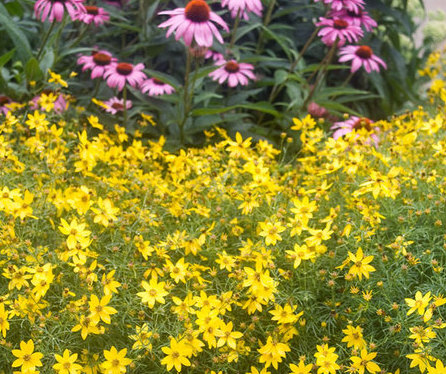
Which Plants Deer Won't Eat (Unless Desperate!)
The Almanac Garden Planner - Use It Free for 7 Days!
Plan your 2025 garden with our award-winning Garden Planner.
ADVERTISEMENT
My wife has planted quite deer resistant plants and deer have eaten before and after they’ve bloomed. There is no such thing as a completely deer resistant plant.
I have heard from old time Vermonters that deer hate the human smell. People I know place human hair in porous bags filled with human hair. Hanging in posts around the gardens. Barber shops would gladly supply cut hair. May have to replenish at times, also can be a fertilizer when spent.
Oh...wouldn't that be attractive & lovely to look at.
Thanks for the tip, Tom!
I live in eastern Ontario, Canada, and this area is polluted with white-tailed deer. I have several vegetable garden patches, some fenced, some not. The only safe annual crops I have found that I can plant outside the fence are garlic, onion, and sunflowers. Deer sometimes nibble on young sunflowers and will decapitate a few, but they mostly leave them alone. I have found sweet corn to also be reasonably deer safe. They will take some leaves from the young plants, but not many and they rarely touch the cobs. Raccoons are the main threat to my corn. For perennials, deer have never bothered my hops, rhubarb, or raspberries.
Northern WI--they EAT EVERYTHING. Only solution is high fencing (and be sure it is VERY sturdy by late winter). Nothing and I mean NOTHING stops them. Boy was I fooled at the garden center "these are very deer resistant" or "will be poisonous, toxic, belly aches", etc.--and the deer ran up to them like candy with no visible bad effects. Ate everything RIGHT WHEN flowing too, which was ultra depressing! No sprays, no spices, no commercial stuff-NOTHING STOPS THEM.
Bullets stop them. Kill one and put its head on a pike near your garden. They seem to stay away with this method.
Yes Indeed Harry!!!! That’s the only thing that keeps them out of my garden!!!!
I think that an electrified wire fence should do the trick. I know it works for horses and cattle. You buy a fence charger at a place like
tractor supply. I was planning on putting out an ornamental iron short fence around the flower garden. The electrify it. The deer touch it \
and they get a nasty shock.
I have found it fascinating that I read so many articles from many different people and publications that tell me how deer will not eat fragrant type plants such as sage, etc. Well, I live at 9,000 feet in the Colorado Rocky Mountains, and I have many wildlife come through eating about everything that I've ever planted, plus various species that grow around my home.
I'm here to tell you that what deer will not eat may go for whitetail deer but not mule deer! I haven't found but a very few things that mule deer will not eat! They graze my chives and winter onions to the ground. I have 3 different types of mountain sage in my yard area and they brouse on those frequently. Camas and iris fall prey to them when blooming. And, I've even watched them browse the tender branch end needles off yellow pine, for, and spruce. I've even seen them tearing up on hind legs to get at mistletoe that has attacked my yellow pine! I would think that would be deadly to them, but they seem to have no problem with it.
All these plus more, the deer will eat even when browsing plants, grasses, and trees are readily available! I would enjoy hearing your take on this.











